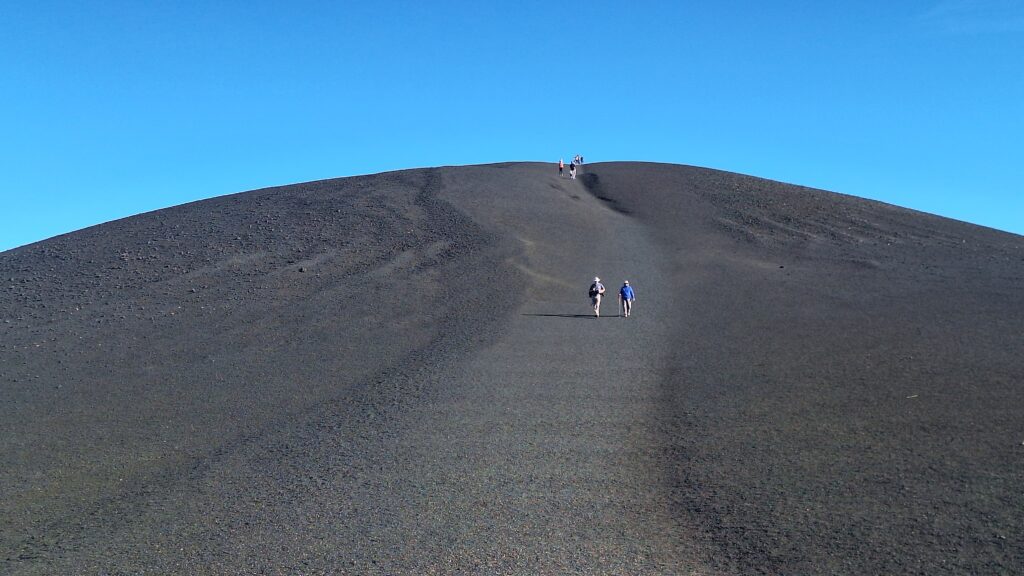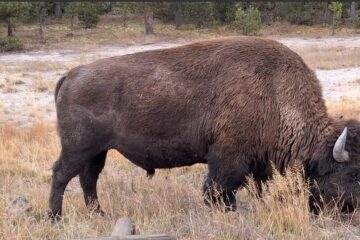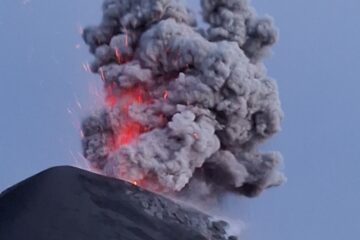3 Reasons to Visit Craters of The Moon
The Craters of the Moon National Monument and Preserve is a park like no other in the United States. The landscape of this national park looks so alien it could easily be mistaken for another planet. This massive park was naturally built by lava flows dotted with islands of cinder cones and sagebrush. This unique natural wonder has a rich history and is full of intriguing facts, caves, and trails I did not expect to find during my road trip through Idaho. Here are three reasons why you should add it to your National Parks visit list:
1. Marvel at the creation of a Lunar Landscape where Astronauts Train for Mars Missions
The Craters of the Moon were formed by a series of volcanic eruptions that began about 15,000 years ago and ended a mere 2,000 years ago. These eruptions were not your typical explosive events but fissure eruptions, where lava oozed from long cracks in the Earth’s crust, creating a sea of lava that covered 618 square miles. The monument is massive, covering an area the size of Rhode Island. It’s so large that it’s visible from space, a testament to the sheer scale of volcanic activity here.
Moreover, in the 1960s, NASA recognized the area’s resemblance to the lunar surface and used it as a training site for astronauts preparing for the Apollo missions. This tradition continues today, as NASA conducts research at the park to aid in preparing future Mars missions.
2. Hiking Trails and Cave Exploration
The Craters of the Moon National Monument and Preserve offers a variety of trails that cater to different levels of hikers, from the leisurely walker to the adventurous explorer. Here are some of the top trails that promise an unforgettable experience in this otherworldly landscape:
- The park offers many caves for the adventurous to explore. The Caves Trail, at 1.8 miles, is easy and can take about 35 minutes to complete. This trail provides a unique opportunity to explore old lava flows and tubes. A permit is required to enter any caverns, including Boy Scout Cave, Indian Tunnel, Dewdrop Cave, and Beauty Cave. You can secure your permit at the visitor’s center, where the park trooper will brief you on what to expect and what to wear.



- The North Crater Trail, at 3.5 miles, is moderate and can take almost two hours to complete. It is a one-way trail that offers variety. The trail traverses North Crater and drops into the crater mouth. The trail continues to the rim of Big Craters before descending to the Spatter Cones.
- Inferno Cone Viewpoint is 0.4 miles uphill, and the increased elevation will make you stop for air. Though steep and short, this trail offers hikers 360-degree views of the Great Rift, the Snake River Plain, and the Pioneer Mountains.

- The Broken Top Loop Trail, at 1.8 miles, is easy and flat. This trail lets hikers observe most of the volcanic features that make up the Craters of the Moon landscape, including loose cinders and rugged lava.
3. A Living Museum of Volcanology with Exciting Cultural Significance and Legends
The park is not just a static monument to past eruptions; it’s a living museum of volcanology. Geologists estimate the area could erupt again, as the average duration between eruptions is about 2,000 years. This means that Craters of the Moon is not extinct but merely dormant, with the potential to reshape the landscape once more.
The Craters of the Moon also hold cultural significance. The Shoshone-Bannock tribes have oral traditions that suggest their ancestors may have witnessed the fiery eruptions that created this landscape. One such legend speaks of an angry serpent whose fiery death led to the formation of the lava fields.
Whether you’re a geology enthusiast, a history buff, or simply someone who appreciates the beauty of nature, Craters of the Moon offers something you’d enjoy. Its trails provide access to its many wonders, and its visitor center gives insights into the forces that shaped this remarkable landscape.



For more information on planning your visit or to delve deeper into the history of the Craters of the Moon, check out the National Park Service’s official website. Roll out on a journey to this lunar landscape on Earth and discover its secrets.
Next: Amazing hiking trails near Las Vegas you can do in a weekend


0 Comments